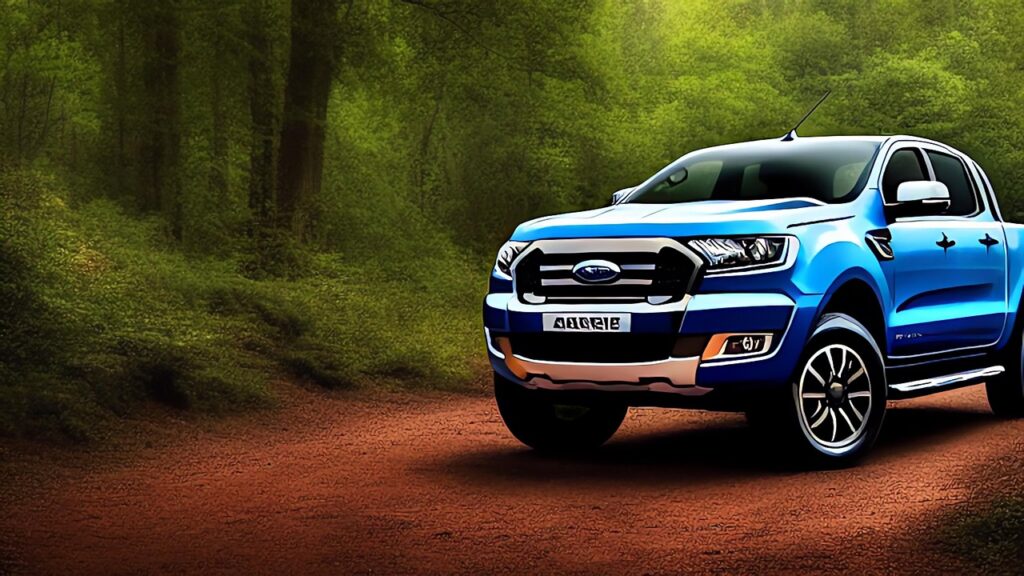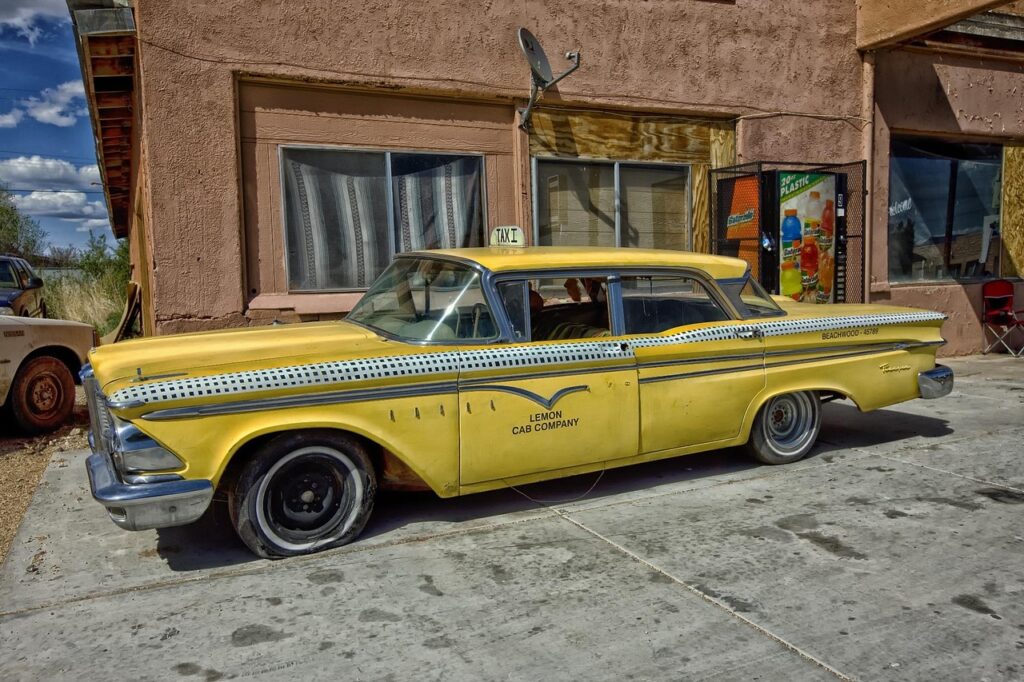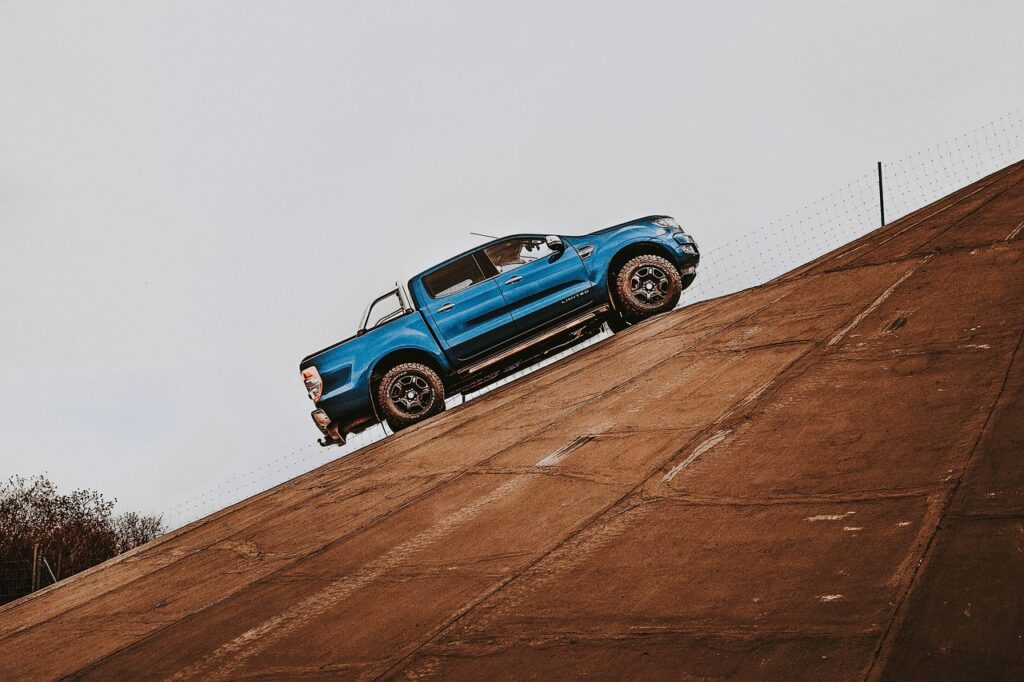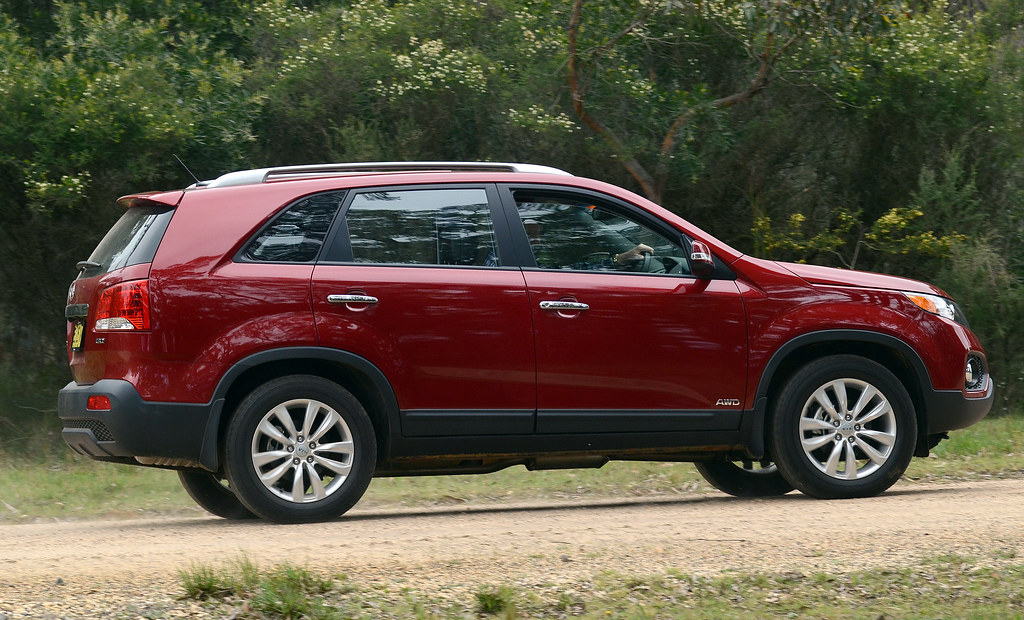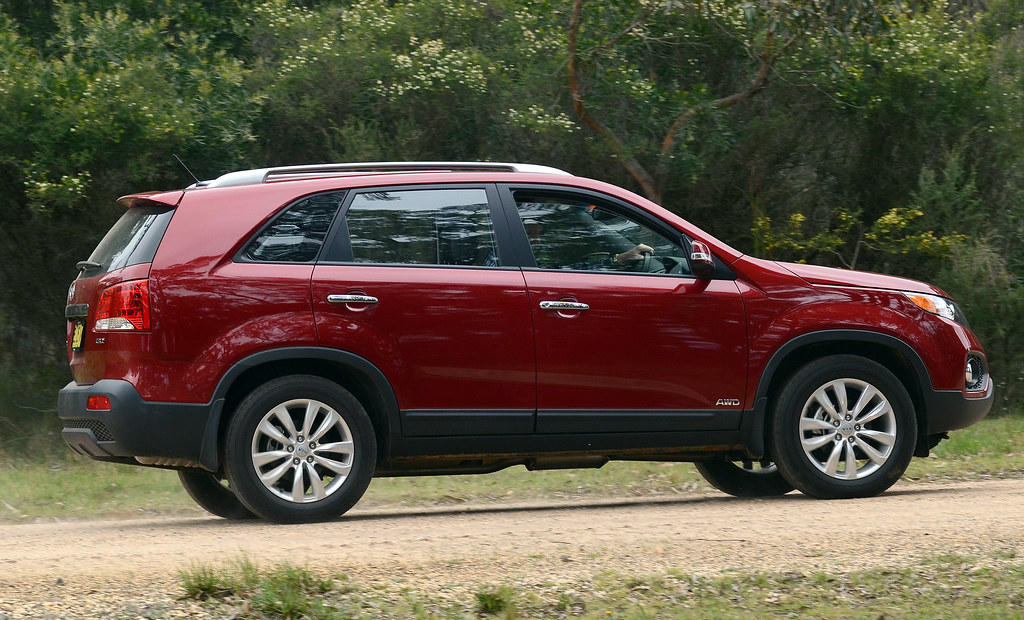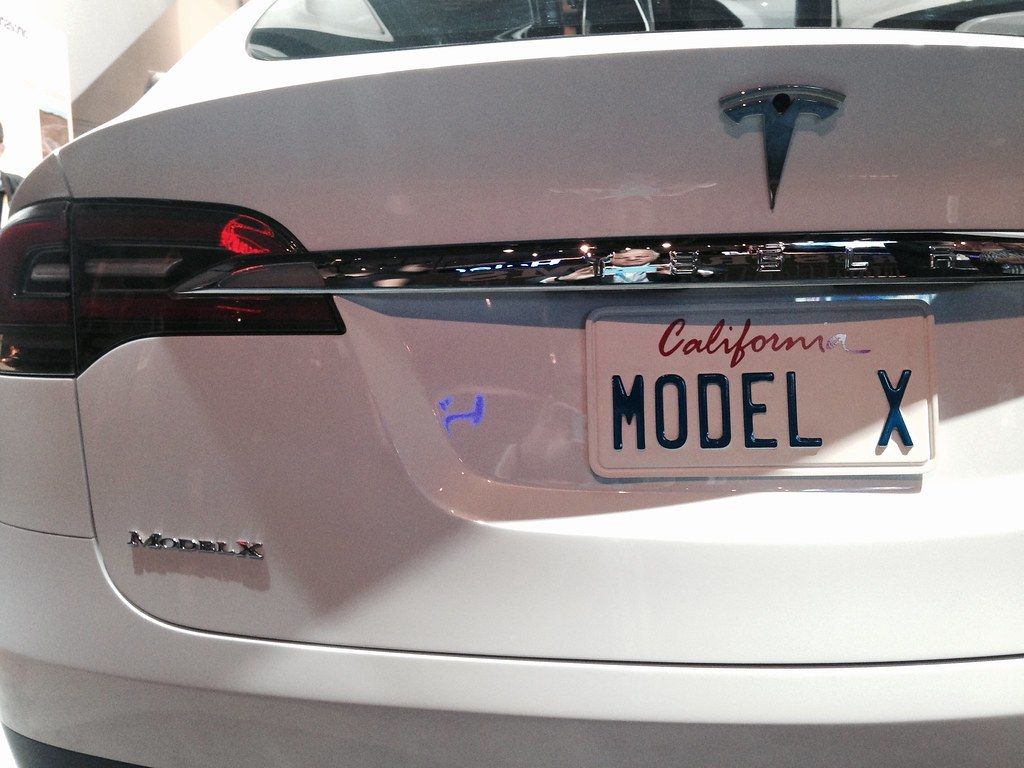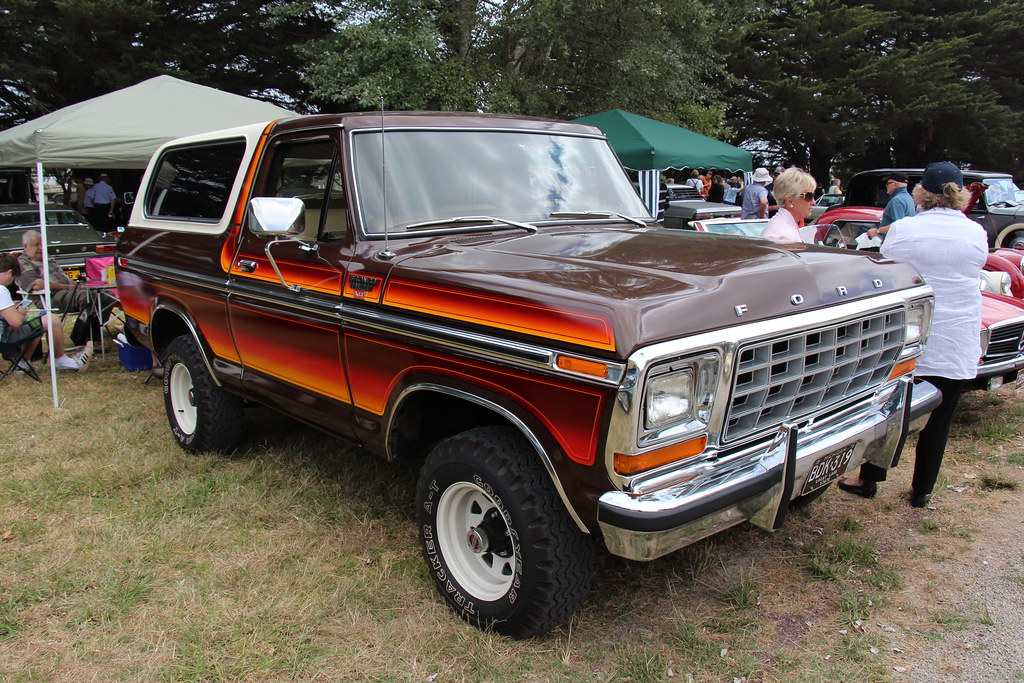
In the highly competitive world of midsize pickups, the 2025 Ford Ranger® emerges not just as another contender, but as a thoughtfully refined champion building on a legacy of rugged utility. This latest iteration, marking the second model year of its fifth generation, represents a significant evolution from the completely overhauled 2024 model. For drivers who demand a vehicle that effortlessly transitions between the demands of the job site and the adventures of the weekend, the 2025 Ranger stands as a testament to Ford’s commitment to practical engineering and everyday reliability. It is a pickup loaded with cutting-edge features designed to blend convenience, connectivity, and confidence, making it a favored choice among those who rely on their trucks day in and day out.
Ford has meticulously crafted the 2025 Ranger to address the multifaceted needs of today’s professionals, from tradespeople needing robust hauling and towing capabilities to adventurers seeking off-road prowess. Every enhancement, whether a subtle aesthetic update or a significant powertrain option, serves a specific purpose, appealing directly to those who want advanced tools that elevate both their work and leisure activities. This isn’t merely a vehicle; it’s a meticulously engineered partner, ready to tackle diverse challenges with an unwavering sense of purpose and a suite of well-integrated technologies that make every task more manageable.
As we embark on an in-depth exploration of the 2025 Ford Ranger, we will uncover the core attributes that solidify its position as a top choice for work. From its powerful engine options and sophisticated drivetrain to its foundational structural integrity and carefully considered fuel economy, each aspect has been designed with the demanding user in mind. Join us as we dissect the engineering marvels and practical considerations that make this midsize pickup an indispensable asset for serious truck enthusiasts and working professionals alike.

1. **Generational Evolution & Minor Enhancements**The 2025 Ford Ranger arrives as the second model year of its highly anticipated fifth generation, following the dramatic and comprehensive overhaul of the 2024 model year. This signifies a maturation point where the foundational strengths introduced in the prior year are further refined and enhanced with strategic, minor updates. Rather than a revolutionary shift, the 2025 model benefits from a period of consolidation and focused improvements, ensuring that the pioneering engineering and redesigned elements from the 2024 launch are fully integrated and optimized.
These minor changes for the 2025 model year are precisely what discerning buyers look for in a dependable work vehicle: practical additions that don’t disrupt a proven formula. Key updates include the addition of a new appearance package, allowing for greater personalization and a refreshed aesthetic. Furthermore, changes to its exterior color palette offer more options for individuals and fleets to reflect their brand or personal style. These are the kinds of thoughtful adjustments that demonstrate Ford’s responsiveness to market trends and customer preferences, ensuring the Ranger remains visually current and appealing without altering its core identity as a rugged, capable machine.
This evolutionary approach, rather than a radical redesign year after year, provides immense confidence for those investing in a work truck. It means that the significant re-engineering efforts of the fifth-gen launch have been tested and are now being subtly perfected. The 2025 Ranger therefore builds on a robust platform that has already proven its mettle, offering the peace of mind that comes with a well-established and continually improved design. This commitment to iterative enhancement makes the 2025 Ranger a thoroughly modern yet inherently reliable choice, ready for any challenge.
Car Model Information: 2020 Ford Ranger XLT
Categories: All set index articles, Articles with short description, Cars introduced in 1982, Commons category link from Wikidata, Ford vehicles
Summary: The Ford Ranger is a compact or mid-size pickup marketed globally by Ford over a series of generations, varying between both in-house or outside development and manufacturing — and with a hiatus in North America from 2011–2018.
Debuting as a compact pickup in North America in 1982 for the 1983 model year, the Ranger was later introduced in some South American countries. From 1998 to 2011, the Ranger nameplate was used for models developed by Mazda for sale outside the North American market. In 2011, Ford introduced the first Ranger based on the T6 platform. Considered a mid-size pickup truck, the model was developed in-house by Ford Australia. In that same year, the North American-market Ranger was discontinued, leaving the T6 platform-based Ranger as the sole Ranger model worldwide.
For the 2019 model year, the Ranger was reintroduced in North America using the globally-marketed T6 model. It is manufactured at the Michigan Assembly Plant at Wayne, Michigan. The Ranger is smaller than the F-150 and larger than the Maverick in the Ford North American pickup truck range, while for markets outside the Americas it is typically the only Ford pickup offered for sale.
The second generation of the T6-based Ranger was released in 2021 for worldwide markets, using a revised T6 platform.
Get more information about: Ford Ranger
Buying a high-performing used car >>>
Brand: Ford Model: Ranger
Price: $22,792 Mileage: 80,324 mi.
Read more about: Is the 2025 Toyota Corolla Hybrid the Ultimate Urban Companion? An In-Depth Car and Driver Analysis
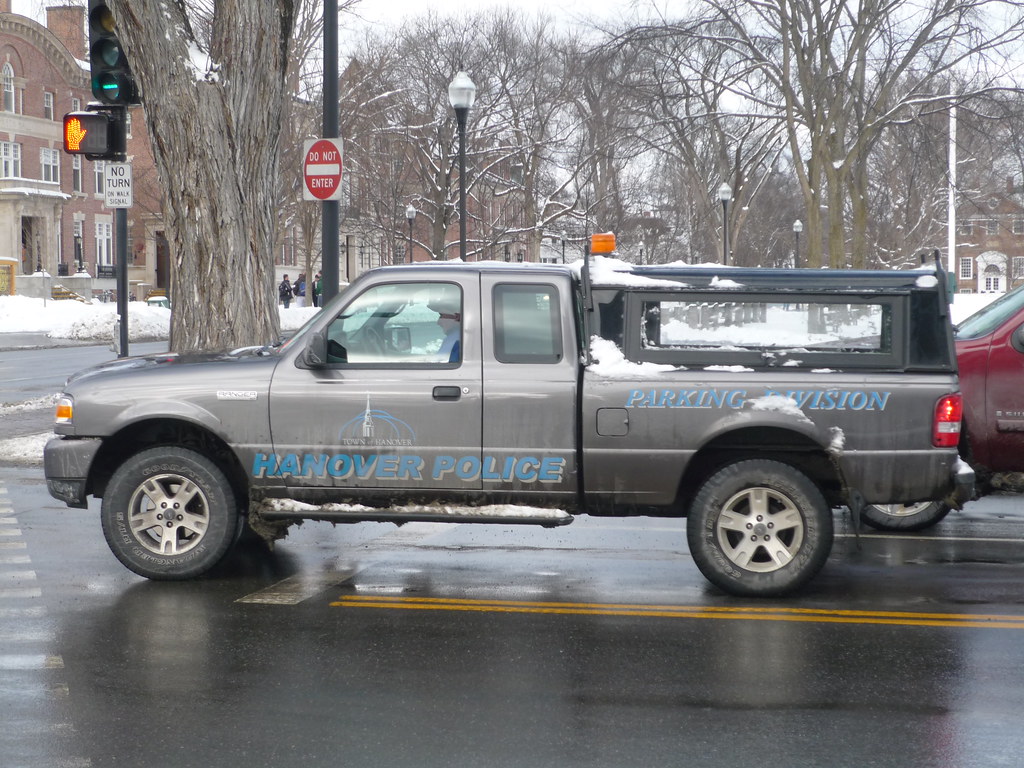
2. **Versatile Model Lineup**Understanding that no two jobs, or indeed no two drivers, are exactly alike, the 2025 Ford Ranger is presented with a versatile model line that caters to a broad spectrum of needs and preferences. The pickup continues to be offered in the SuperCrew, Short Bed configuration as standard, providing a practical balance of passenger space and cargo utility. This setup is available across a comprehensive range of trims: XL, XLT, Lariat, and the high-performance Raptor, each designed to deliver specific levels of capability, comfort, and technological sophistication.
The XL trim serves as the robust entry point, providing the essential functionality and durability expected of a Ford truck, making it an ideal choice for fleet operations or individual contractors who prioritize straightforward utility. Moving up, the XLT trim introduces additional features and comfort amenities, enhancing the daily driving and working experience without unnecessary extravagance. For those who desire a blend of rugged capability with premium comforts and advanced technology, the Lariat trim offers a more refined cabin and a richer array of features, elevating the work environment to new levels of sophistication.
Capping the lineup is the Ranger Raptor, a distinct model engineered for extreme off-road performance, yet without compromising its inherent truck utility. Its inclusion ensures that even the most demanding work environments, particularly those off the beaten path, can be tackled with confidence and unparalleled capability. Furthermore, every trim level offers the critical choice between rear-wheel-drive (RWD) or four-wheel-drive (4WD) configurations, allowing buyers to precisely tailor their Ranger to their specific operational requirements and the terrain they typically encounter. This extensive and well-defined lineup underscores Ford’s understanding that versatility is paramount for a true workhorse.
Car Model Information: 2020 Ford Ranger XLT
Categories: All set index articles, Articles with short description, Cars introduced in 1982, Commons category link from Wikidata, Ford vehicles
Summary: The Ford Ranger is a compact or mid-size pickup marketed globally by Ford over a series of generations, varying between both in-house or outside development and manufacturing — and with a hiatus in North America from 2011–2018.
Debuting as a compact pickup in North America in 1982 for the 1983 model year, the Ranger was later introduced in some South American countries. From 1998 to 2011, the Ranger nameplate was used for models developed by Mazda for sale outside the North American market. In 2011, Ford introduced the first Ranger based on the T6 platform. Considered a mid-size pickup truck, the model was developed in-house by Ford Australia. In that same year, the North American-market Ranger was discontinued, leaving the T6 platform-based Ranger as the sole Ranger model worldwide.
For the 2019 model year, the Ranger was reintroduced in North America using the globally-marketed T6 model. It is manufactured at the Michigan Assembly Plant at Wayne, Michigan. The Ranger is smaller than the F-150 and larger than the Maverick in the Ford North American pickup truck range, while for markets outside the Americas it is typically the only Ford pickup offered for sale.
The second generation of the T6-based Ranger was released in 2021 for worldwide markets, using a revised T6 platform.
Get more information about: Ford Ranger
Buying a high-performing used car >>>
Brand: Ford Model: Ranger
Price: $22,792 Mileage: 80,324 mi.
Read more about: Driving Forward: A Detailed Guide to the 2025 Mid-Cycle Refreshes from Mitsubishi and Ford
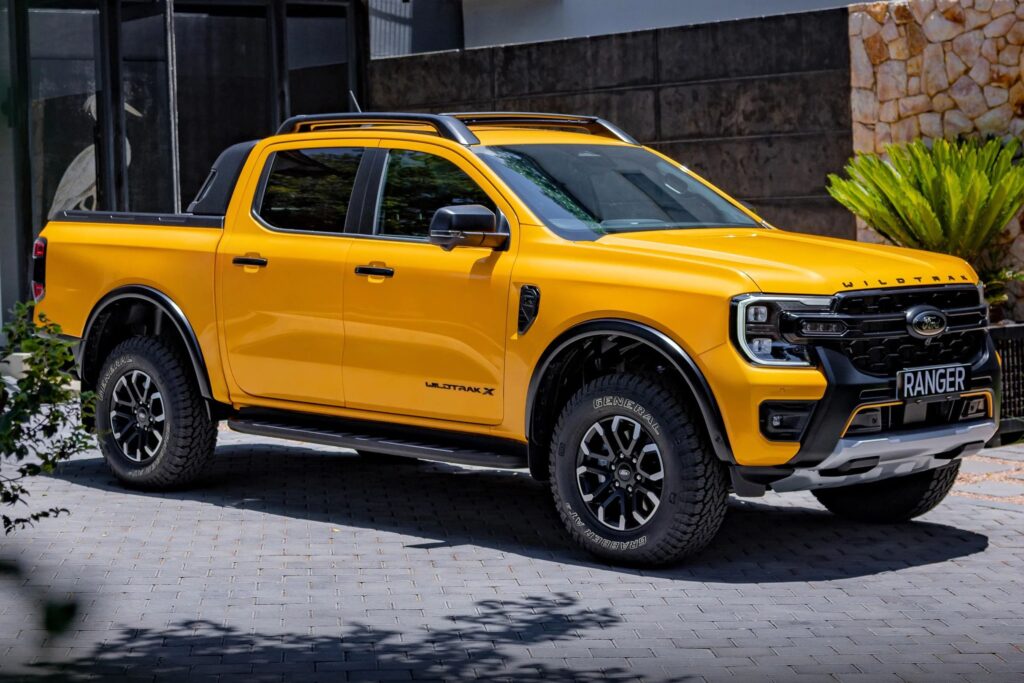
3. **Powerful & Diverse Powertrain Options**At the heart of any capable work truck lies its powertrain, and the 2025 Ford Ranger truly shines with a selection of three potent engine options, ensuring there’s a powerplant perfectly matched to every job and driving style. The standard offering for the XL, XLT, and Lariat trims is the 2.3L EcoBoost I4 engine. This turbocharged gasoline engine delivers a respectable 270 horsepower at 5500 RPM and a robust 310 pound-feet of torque at 3000 RPM. This makes it more than capable for everyday tasks, hauling, and light to moderate towing, providing an excellent balance of power and efficiency for a wide range of professional users.
For those requiring an elevated level of performance, particularly for heavier loads or more demanding terrain, the 2.7L EcoBoost V6 is available as an upgrade for the XLT and Lariat trims. This turbocharged V6 engine significantly steps up the power output, generating an impressive 315 horsepower at 5750 RPM and a formidable 400 pound-feet of torque at 3000 RPM. The substantial increase in torque at low RPM is especially beneficial for accelerating with trailers or navigating challenging inclines, providing the kind of confident grunt that professionals appreciate when performance cannot be compromised.
At the pinnacle of the Ranger’s performance offerings is the twin-turbocharged 3.0L EcoBoost V6, which is exclusive to and standard on the high-performance Ranger Raptor. This powerhouse engine is engineered for exhilaration and extreme capability, unleashing 405 horsepower at 5500 RPM and a colossal 430 pound-feet of torque at 3500 RPM. Designed to conquer the most demanding off-road conditions and deliver breathtaking on-road acceleration, the Raptor’s engine ensures that even the most arduous work or adventurous play is met with an abundance of power. This diverse range of engines ensures that whether your priority is everyday efficiency, substantial towing capability, or extreme performance, the 2025 Ford Ranger has a powertrain that meets and exceeds expectations.
Car Model Information: 2020 Ford Ranger XLT
Categories: All set index articles, Articles with short description, Cars introduced in 1982, Commons category link from Wikidata, Ford vehicles
Summary: The Ford Ranger is a compact or mid-size pickup marketed globally by Ford over a series of generations, varying between both in-house or outside development and manufacturing — and with a hiatus in North America from 2011–2018.
Debuting as a compact pickup in North America in 1982 for the 1983 model year, the Ranger was later introduced in some South American countries. From 1998 to 2011, the Ranger nameplate was used for models developed by Mazda for sale outside the North American market. In 2011, Ford introduced the first Ranger based on the T6 platform. Considered a mid-size pickup truck, the model was developed in-house by Ford Australia. In that same year, the North American-market Ranger was discontinued, leaving the T6 platform-based Ranger as the sole Ranger model worldwide.
For the 2019 model year, the Ranger was reintroduced in North America using the globally-marketed T6 model. It is manufactured at the Michigan Assembly Plant at Wayne, Michigan. The Ranger is smaller than the F-150 and larger than the Maverick in the Ford North American pickup truck range, while for markets outside the Americas it is typically the only Ford pickup offered for sale.
The second generation of the T6-based Ranger was released in 2021 for worldwide markets, using a revised T6 platform.
Get more information about: Ford Ranger
Buying a high-performing used car >>>
Brand: Ford Model: Ranger
Price: $22,792 Mileage: 80,324 mi.
Read more about: Navigating the Unseen: The 15 Best 2025 Cars with Advanced Blind-Spot Technology
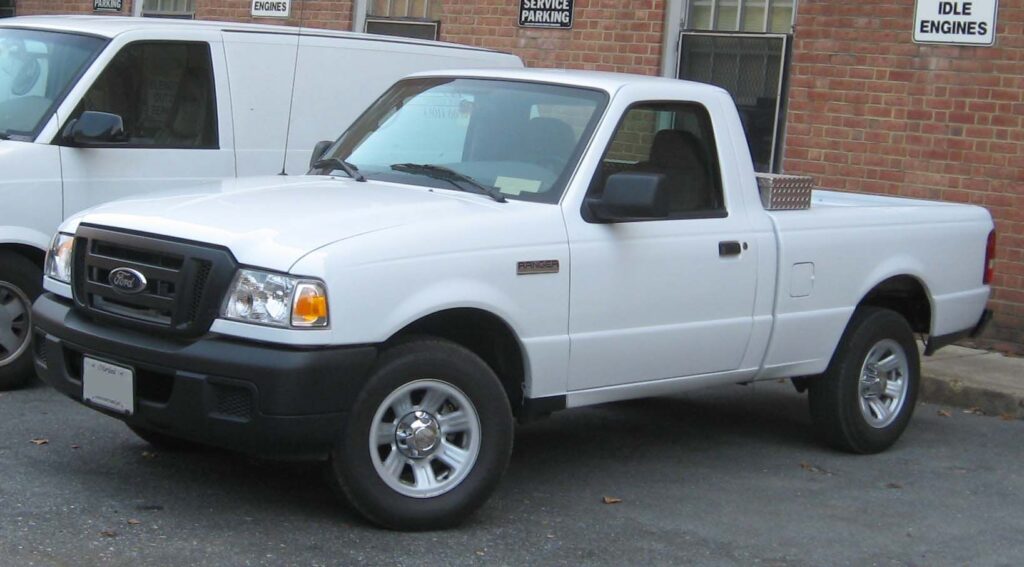
4. **Robust 10-Speed Automatic Transmission**Complementing the formidable engine options, the 2025 Ford Ranger exclusively features a sophisticated 10-speed SelectShift automatic transmission across its entire lineup. This advanced gearbox is a critical component in how the Ranger delivers its power and torque, meticulously designed to optimize performance, efficiency, and overall driving refinement. The proliferation of ten forward gears allows the transmission to keep the engine operating within its optimal powerband more consistently, whether you’re cruising on the highway, navigating stop-and-go city traffic, or tackling rugged off-road trails.
The benefits of a 10-speed automatic are particularly pronounced in a work truck, where varying loads and driving conditions are the norm. The close gear ratios ensure smoother transitions between shifts, minimizing power loss and providing a seamless, responsive driving experience. This seamless delivery of power is crucial when accelerating with a heavy trailer, merging onto a busy highway, or navigating inclines on a job site. The transmission’s intelligent programming anticipates driver inputs and environmental factors, adapting its shift points to maintain optimal power and fuel efficiency.
Furthermore, the SelectShift functionality provides drivers with the option for manual gear selection, offering greater control in specific driving situations, such as descending steep grades with a loaded bed or precise maneuvering in challenging terrain. This combination of intelligent automatic operation and driver-selectable control makes the 10-speed transmission a cornerstone of the 2025 Ford Ranger’s impressive capability and versatility. It ensures that regardless of the engine choice or the demands of the task at hand, power is delivered efficiently, effectively, and with utmost reliability, affirming the Ranger’s status as a top-tier work vehicle.
Car Model Information: 2020 Ford Ranger XLT
Categories: All set index articles, Articles with short description, Cars introduced in 1982, Commons category link from Wikidata, Ford vehicles
Summary: The Ford Ranger is a compact or mid-size pickup marketed globally by Ford over a series of generations, varying between both in-house or outside development and manufacturing — and with a hiatus in North America from 2011–2018.
Debuting as a compact pickup in North America in 1982 for the 1983 model year, the Ranger was later introduced in some South American countries. From 1998 to 2011, the Ranger nameplate was used for models developed by Mazda for sale outside the North American market. In 2011, Ford introduced the first Ranger based on the T6 platform. Considered a mid-size pickup truck, the model was developed in-house by Ford Australia. In that same year, the North American-market Ranger was discontinued, leaving the T6 platform-based Ranger as the sole Ranger model worldwide.
For the 2019 model year, the Ranger was reintroduced in North America using the globally-marketed T6 model. It is manufactured at the Michigan Assembly Plant at Wayne, Michigan. The Ranger is smaller than the F-150 and larger than the Maverick in the Ford North American pickup truck range, while for markets outside the Americas it is typically the only Ford pickup offered for sale.
The second generation of the T6-based Ranger was released in 2021 for worldwide markets, using a revised T6 platform.
Get more information about: Ford Ranger
Buying a high-performing used car >>>
Brand: Ford Model: Ranger
Price: $22,792 Mileage: 80,324 mi.
Read more about: Navigating the Unseen: The 15 Best 2025 Cars with Advanced Blind-Spot Technology
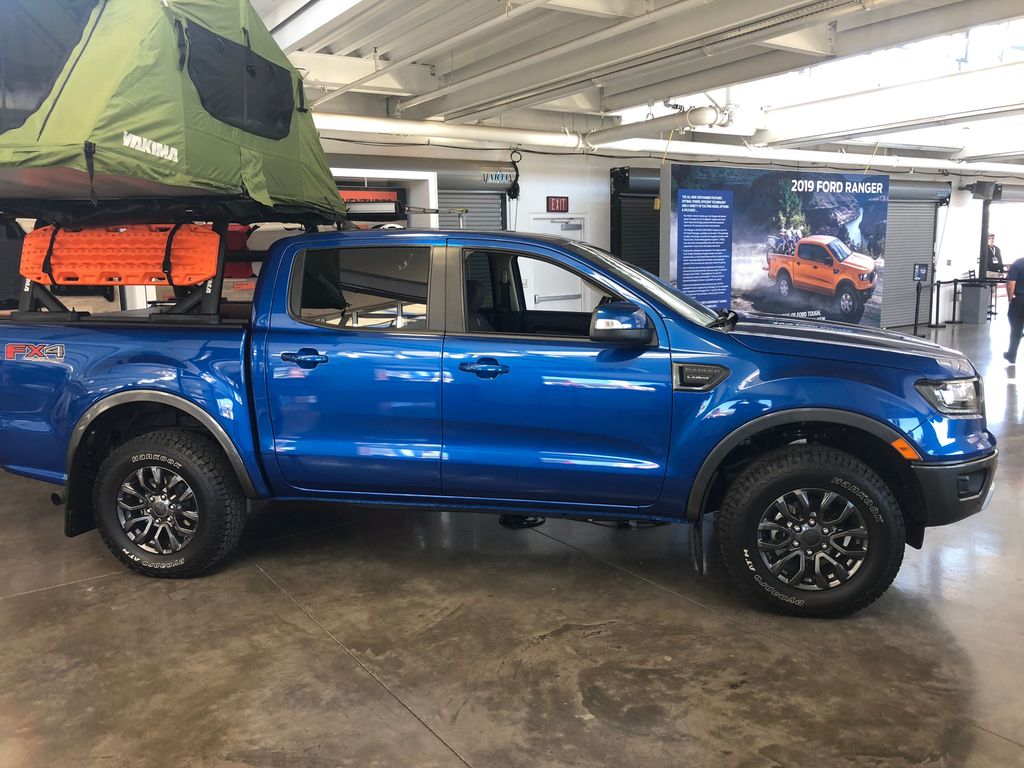
5. **Flexible Drivetrain Choices (RWD/4WD)**For a work vehicle, adaptability to various environments is paramount, and the 2025 Ford Ranger addresses this directly with its flexible drivetrain options, offering both Rear-Wheel Drive (RWD) and Four-Wheel Drive (4WD) across its SuperCrew, Short Bed configuration. This choice allows buyers to precisely tailor their Ranger to the specific demands of their work and geographical location, ensuring optimal performance and efficiency for every operational scenario. The RWD configuration is an excellent choice for professionals who primarily operate on paved roads, in urban environments, or in regions with minimal adverse weather conditions.
Opting for RWD provides several advantages, including typically better fuel economy and a simpler, lighter vehicle structure, which can translate to lower initial costs and maintenance. It is perfectly suited for tasks such as urban deliveries, daily commutes, or light-duty hauling where the enhanced traction of 4WD is not a primary requirement. This focus on essential capability makes the RWD Ranger a practical and economical choice for many businesses and individual users, delivering reliable performance without unnecessary complexity.
Conversely, the availability of a robust 4WD system is indispensable for those whose work takes them off the beaten path, onto construction sites, through muddy fields, or into areas with challenging weather conditions. The 4WD system provides enhanced traction and control, making it easier to navigate slippery surfaces, climb steep grades, and pull through difficult terrain. This capability is crucial for trades such as landscaping, utility maintenance, or remote construction, where reliable access to challenging job sites is non-negotiable. By offering both RWD and 4WD, the 2025 Ford Ranger ensures that every professional can select the drivetrain that provides the ideal balance of capability, efficiency, and confidence for their unique operational needs.
Car Model Information: 2020 Ford Ranger XLT
Categories: All set index articles, Articles with short description, Cars introduced in 1982, Commons category link from Wikidata, Ford vehicles
Summary: The Ford Ranger is a compact or mid-size pickup marketed globally by Ford over a series of generations, varying between both in-house or outside development and manufacturing — and with a hiatus in North America from 2011–2018.
Debuting as a compact pickup in North America in 1982 for the 1983 model year, the Ranger was later introduced in some South American countries. From 1998 to 2011, the Ranger nameplate was used for models developed by Mazda for sale outside the North American market. In 2011, Ford introduced the first Ranger based on the T6 platform. Considered a mid-size pickup truck, the model was developed in-house by Ford Australia. In that same year, the North American-market Ranger was discontinued, leaving the T6 platform-based Ranger as the sole Ranger model worldwide.
For the 2019 model year, the Ranger was reintroduced in North America using the globally-marketed T6 model. It is manufactured at the Michigan Assembly Plant at Wayne, Michigan. The Ranger is smaller than the F-150 and larger than the Maverick in the Ford North American pickup truck range, while for markets outside the Americas it is typically the only Ford pickup offered for sale.
The second generation of the T6-based Ranger was released in 2021 for worldwide markets, using a revised T6 platform.
Get more information about: Ford Ranger
Buying a high-performing used car >>>
Brand: Ford Model: Ranger
Price: $22,792 Mileage: 80,324 mi.
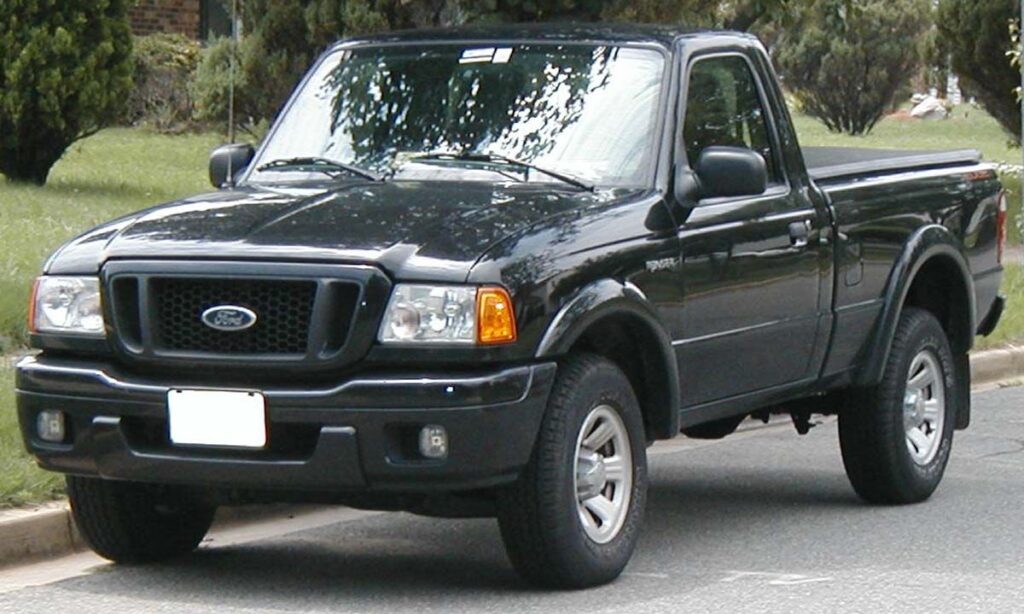
6. **Optimized Fuel Economy**In an era where operational costs are a significant consideration for any business or individual professional, the fuel economy of a work truck plays a critical role in its overall value proposition. The 2025 Ford Ranger offers optimized fuel economy figures that vary depending on the chosen engine and drivetrain configuration, providing options that balance power with efficiency. This allows buyers to select a powertrain that aligns with both their performance requirements and their budget for running costs.
Starting with the 2.3L EcoBoost I4 engine paired with the 10-speed automatic transmission, the RWD configuration achieves commendable ratings of 21 City MPG, 26 Highway MPG, and 23 Combined MPG. The 4WD version of this engine still performs admirably, offering 19 City MPG, 26 Highway MPG, and 22 Combined MPG. These figures highlight the efficiency of the standard engine, making it an attractive option for those prioritizing lower fuel consumption for their daily work routines and longer commutes.
Moving to the more powerful 2.7L EcoBoost V6 engine, which is exclusively offered with 4WD, the Ranger delivers 19 City MPG, 23 Highway MPG, and 20 Combined MPG. While slightly lower than the I4, these figures are still respectable for a V6 engine of this power output, especially considering its enhanced torque and towing capabilities. Finally, the high-performance 3.0L EcoBoost V6 in the Ranger Raptor, also with 4WD, prioritizes maximum power and off-road prowess, resulting in 16 City MPG, 18 Highway MPG, and 17 Combined MPG. While this reflects its performance-oriented nature, it remains competitive within its niche.
Ford’s commitment to providing a range of efficient options means that professionals can accurately assess their driving needs and choose a 2025 Ranger that offers a compelling balance between robust performance and minimized fuel expenditure. This strategic engineering makes the Ranger a financially sensible choice, directly contributing to lower operating costs and a more sustainable return on investment for its owners, a vital factor in any work vehicle.
Car Model Information: 2020 Ford Ranger XLT
Categories: All set index articles, Articles with short description, Cars introduced in 1982, Commons category link from Wikidata, Ford vehicles
Summary: The Ford Ranger is a compact or mid-size pickup marketed globally by Ford over a series of generations, varying between both in-house or outside development and manufacturing — and with a hiatus in North America from 2011–2018.
Debuting as a compact pickup in North America in 1982 for the 1983 model year, the Ranger was later introduced in some South American countries. From 1998 to 2011, the Ranger nameplate was used for models developed by Mazda for sale outside the North American market. In 2011, Ford introduced the first Ranger based on the T6 platform. Considered a mid-size pickup truck, the model was developed in-house by Ford Australia. In that same year, the North American-market Ranger was discontinued, leaving the T6 platform-based Ranger as the sole Ranger model worldwide.
For the 2019 model year, the Ranger was reintroduced in North America using the globally-marketed T6 model. It is manufactured at the Michigan Assembly Plant at Wayne, Michigan. The Ranger is smaller than the F-150 and larger than the Maverick in the Ford North American pickup truck range, while for markets outside the Americas it is typically the only Ford pickup offered for sale.
The second generation of the T6-based Ranger was released in 2021 for worldwide markets, using a revised T6 platform.
Get more information about: Ford Ranger
Buying a high-performing used car >>>
Brand: Ford Model: Ranger
Price: $22,792 Mileage: 80,324 mi.
Read more about: Navigating the 2025 Auto Market: An In-Depth Look at Pricing, Technology, and Consumer Shifts
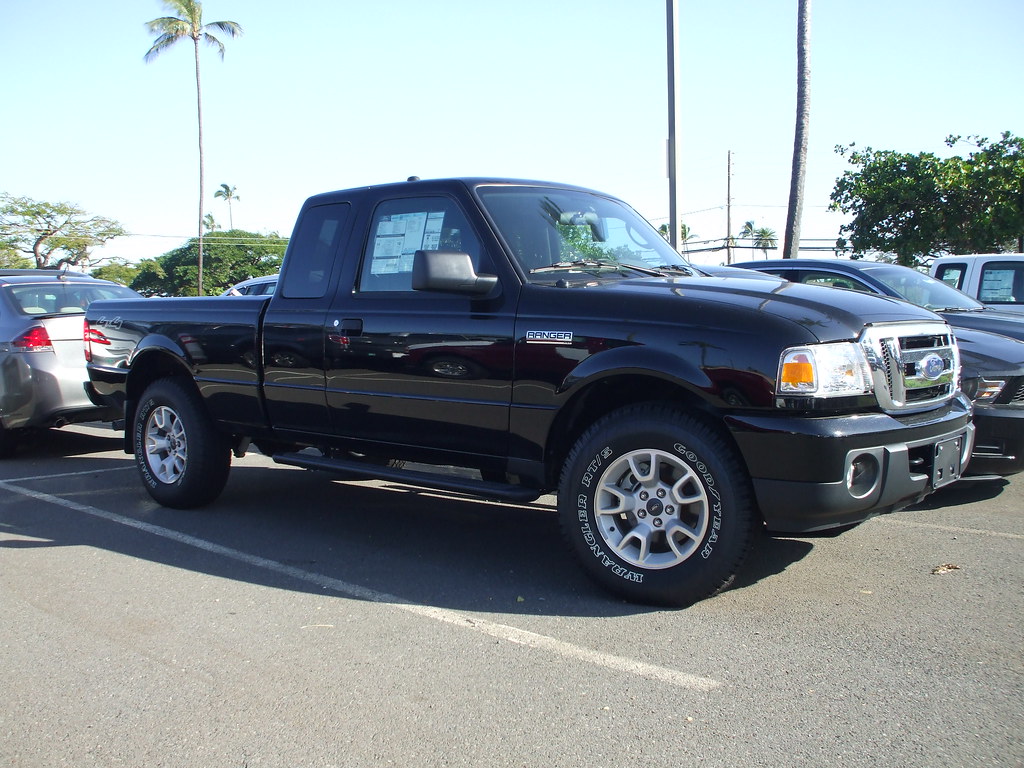
7. **Intelligent Cabin Features for Everyday Comfort**Step inside the 2025 Ford Ranger, and the meticulous thoughtfulness of Ford’s approach to cabin innovation is immediately apparent. At the core of its user-friendly design is the available 12-inch touchscreen, strategically placed at the center stack. This expansive display consolidates virtually every major function into one easy-to-use interface, ranging from climate control adjustments to accessing your favorite applications, all organized to minimize driver distraction. For a professional who spends countless hours behind the wheel, such intuitive design is not merely a luxury but a crucial element for maintaining focus and efficiency on the job.
The underlying technology, SYNC® 4A, provides a sophisticated in-vehicle suite that ensures drivers remain connected to essential information and entertainment. Its enhanced voice recognition capability means that tasks that once required hands-on engagement can now be handled with natural speech commands. Whether it’s queueing up a specific music playlist, initiating a phone call, or adjusting settings, drivers can maintain their hands on the wheel and eyes on the road. Furthermore, the seamless wireless integration of Apple CarPlay® and Android Auto™ significantly reduces cabin clutter, providing a clean and organized workspace, which is paramount in a professional setting.
This blend of connectivity and ergonomic design ensures that daily errands and demanding work tasks become more manageable. Professionals can confidently engage in hands-free calls, enjoy podcasts during commutes, or navigate to new job sites with minimal fuss, all while focusing on their primary driving responsibilities. The intuitive interface and responsive nature of the touchscreen allow for fluid transitions between functions, making the driving experience genuinely easygoing despite the complexity of modern technology.
For those who appreciate high-fidelity audio, the available B&O® Sound System by Bang & Olufsen® elevates the in-cabin experience with its 10 speakers, including a dedicated subwoofer. This system delivers nuanced clarity, crisp highs, and rich bass notes, transforming commutes or longer trips into an immersive auditory experience. Complementing this, the straightforward arrangement of the dashboard, paired with a digital display, keeps critical information in clear view, from standard driving statistics to more detailed vehicle diagnostics, ensuring that drivers are always informed without being overwhelmed.
Car Model Information: 2020 Ford Ranger XLT
Categories: All set index articles, Articles with short description, Cars introduced in 1982, Commons category link from Wikidata, Ford vehicles
Summary: The Ford Ranger is a compact or mid-size pickup marketed globally by Ford over a series of generations, varying between both in-house or outside development and manufacturing — and with a hiatus in North America from 2011–2018.
Debuting as a compact pickup in North America in 1982 for the 1983 model year, the Ranger was later introduced in some South American countries. From 1998 to 2011, the Ranger nameplate was used for models developed by Mazda for sale outside the North American market. In 2011, Ford introduced the first Ranger based on the T6 platform. Considered a mid-size pickup truck, the model was developed in-house by Ford Australia. In that same year, the North American-market Ranger was discontinued, leaving the T6 platform-based Ranger as the sole Ranger model worldwide.
For the 2019 model year, the Ranger was reintroduced in North America using the globally-marketed T6 model. It is manufactured at the Michigan Assembly Plant at Wayne, Michigan. The Ranger is smaller than the F-150 and larger than the Maverick in the Ford North American pickup truck range, while for markets outside the Americas it is typically the only Ford pickup offered for sale.
The second generation of the T6-based Ranger was released in 2021 for worldwide markets, using a revised T6 platform.
Get more information about: Ford Ranger
Buying a high-performing used car >>>
Brand: Ford Model: Ranger
Price: $22,792 Mileage: 80,324 mi.
Read more about: Driving Forward: A Detailed Guide to the 2025 Mid-Cycle Refreshes from Mitsubishi and Ford
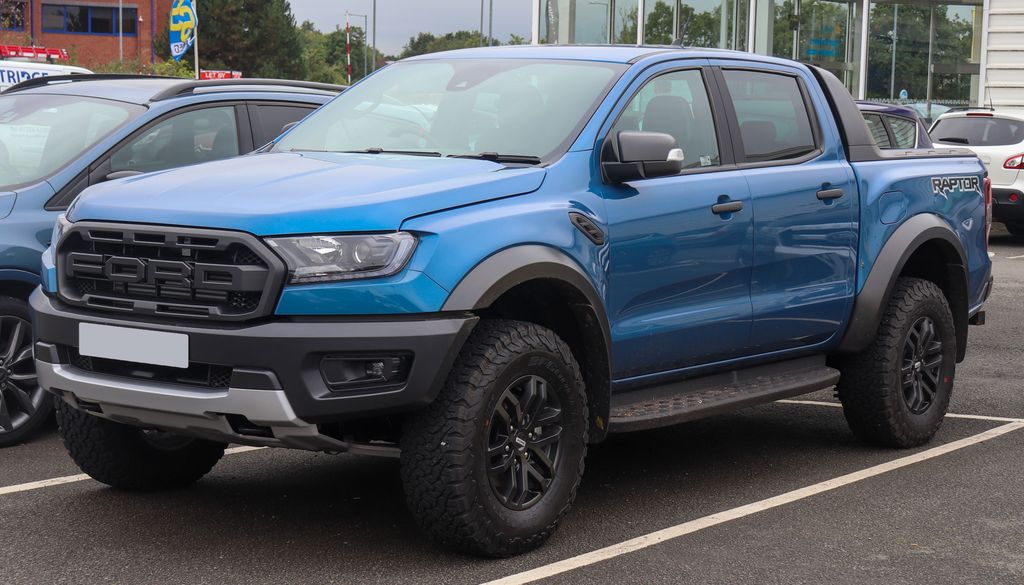
8. **Comprehensive Driver-Assist Systems for Confident Travels**Beyond entertainment and connectivity, the 2025 Ford Ranger’s technology actively enhances safety and driver awareness, a vital consideration for any work vehicle facing diverse road conditions. At the forefront of these advancements is Ford Co-Pilot360® Technology, an integrated suite of driver-assist features meticulously engineered to help professionals make more informed decisions and mitigate potential hazards behind the wheel. This intelligent system acts as an extra set of eyes, providing peace of mind during demanding journeys.
A standout feature within this suite is the BLIS® (Blind Spot Information System). This system not only vigilantly scans the pickup’s inherent blind spots but can also extend its coverage to include a conventional trailer, a significant advantage for those who frequently tow equipment, materials, or even recreational gear for work-life balance. This intelligent application of smart technology to everyday towing scenarios provides an invaluable layer of safety, offering crucial alerts when merging or changing lanes in bustling city traffic or on busy highways, directly enhancing operational security.
In situations where rapid response is critical, Pre-Collision Assist® with Automatic Emergency Braking proves to be an indispensable guardian. This system continuously scans the road ahead for potential obstacles, including other vehicles or pedestrians. If it detects a possible collision and the driver does not respond adequately to initial warnings, the system is engineered to automatically apply the brakes. This proactive intervention provides an essential layer of vigilance, particularly beneficial in stop-and-go congestion, navigating urban environments, or on high-traffic roads, helping to prevent or lessen the severity of impacts.
Further enhancing confidence and reducing driver fatigue are features like Auto High-Beam Headlamps, which intuitively toggle between high and low beams based on oncoming traffic, ensuring optimal visibility during nighttime drives without inconveniencing other motorists. The available Lane-Keeping System offers timely and subtle alerts if the truck begins to unintentionally drift from its lane, assisting drivers in maintaining their path, which is especially helpful during extended drives on long hauls or after a demanding workday. These systems collectively contribute to a safer, more focused driving experience, crucial for professionals.
Car Model Information: 2020 Ford Ranger XLT
Categories: All set index articles, Articles with short description, Cars introduced in 1982, Commons category link from Wikidata, Ford vehicles
Summary: The Ford Ranger is a compact or mid-size pickup marketed globally by Ford over a series of generations, varying between both in-house or outside development and manufacturing — and with a hiatus in North America from 2011–2018.
Debuting as a compact pickup in North America in 1982 for the 1983 model year, the Ranger was later introduced in some South American countries. From 1998 to 2011, the Ranger nameplate was used for models developed by Mazda for sale outside the North American market. In 2011, Ford introduced the first Ranger based on the T6 platform. Considered a mid-size pickup truck, the model was developed in-house by Ford Australia. In that same year, the North American-market Ranger was discontinued, leaving the T6 platform-based Ranger as the sole Ranger model worldwide.
For the 2019 model year, the Ranger was reintroduced in North America using the globally-marketed T6 model. It is manufactured at the Michigan Assembly Plant at Wayne, Michigan. The Ranger is smaller than the F-150 and larger than the Maverick in the Ford North American pickup truck range, while for markets outside the Americas it is typically the only Ford pickup offered for sale.
The second generation of the T6-based Ranger was released in 2021 for worldwide markets, using a revised T6 platform.
Get more information about: Ford Ranger
Buying a high-performing used car >>>
Brand: Ford Model: Ranger
Price: $22,792 Mileage: 80,324 mi.
Read more about: Navigating the Unseen: The 15 Best 2025 Cars with Advanced Blind-Spot Technology
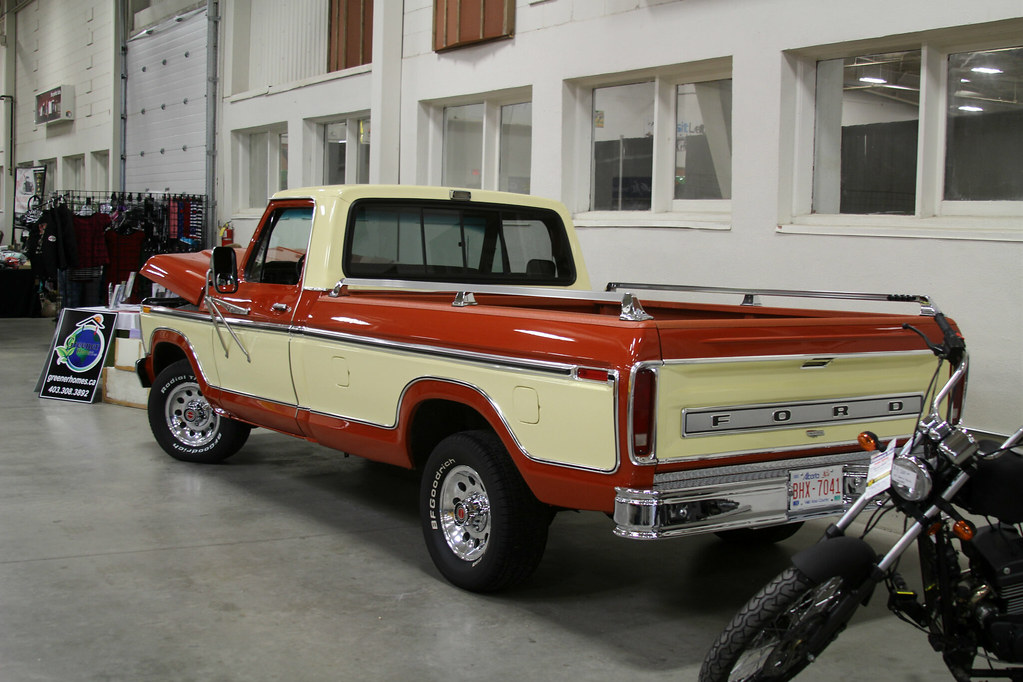
9. **Enhanced Camera Capabilities for Unmatched Visibility**Navigating crowded job sites, tight parking lots, or busy urban streets often presents significant challenges, demanding precise maneuvering and comprehensive situational awareness. The 2025 Ford Ranger addresses these complexities head-on with its advanced camera capabilities, transforming the way drivers interact with their surroundings. A standard Rear-View Camera provides a clear and immediate view of what’s behind the truck, making basic backing up significantly safer and simpler, a fundamental requirement for any work vehicle.
Elevating this capability is the optional 360-Degree Camera system, which offers an unparalleled perspective of the truck’s immediate environment. Utilizing multiple viewpoints from cameras positioned around the vehicle, this system stitches together a virtual bird’s-eye view displayed prominently on the central touchscreen. This detailed, omnidirectional look at surroundings captures potential obstacles from every angle, providing drivers with an comprehensive visual aid that eliminates blind spots often missed by conventional mirrors.
The practical benefits of the 360-Degree Camera are immense for professionals. Whether it’s parallel parking a long truck in a tight urban spot, navigating a narrow alley, or precisely backing up to a trailer hitch, the system grants an extra dose of confidence. It enables drivers to gauge distances more accurately and identify potential hazards that might otherwise go unnoticed, ensuring safer and more efficient maneuvers in even the most challenging confined spaces. This technology transforms difficult parking and navigating tasks into manageable, stress-free operations, proving its worth for everyday utility.
Car Model Information: 2020 Ford Ranger XLT
Categories: All set index articles, Articles with short description, Cars introduced in 1982, Commons category link from Wikidata, Ford vehicles
Summary: The Ford Ranger is a compact or mid-size pickup marketed globally by Ford over a series of generations, varying between both in-house or outside development and manufacturing — and with a hiatus in North America from 2011–2018.
Debuting as a compact pickup in North America in 1982 for the 1983 model year, the Ranger was later introduced in some South American countries. From 1998 to 2011, the Ranger nameplate was used for models developed by Mazda for sale outside the North American market. In 2011, Ford introduced the first Ranger based on the T6 platform. Considered a mid-size pickup truck, the model was developed in-house by Ford Australia. In that same year, the North American-market Ranger was discontinued, leaving the T6 platform-based Ranger as the sole Ranger model worldwide.
For the 2019 model year, the Ranger was reintroduced in North America using the globally-marketed T6 model. It is manufactured at the Michigan Assembly Plant at Wayne, Michigan. The Ranger is smaller than the F-150 and larger than the Maverick in the Ford North American pickup truck range, while for markets outside the Americas it is typically the only Ford pickup offered for sale.
The second generation of the T6-based Ranger was released in 2021 for worldwide markets, using a revised T6 platform.
Get more information about: Ford Ranger
Buying a high-performing used car >>>
Brand: Ford Model: Ranger
Price: $22,792 Mileage: 80,324 mi.
Read more about: Beyond the Soccer Mom Stigma: Unpacking the 2025 Minivan Renaissance and Why These Practical Powerhouses Are Roaring Back
10. **Dedicated Trail-Ready Tools and Innovations**While the 2025 Ford Ranger excels on paved roads, its design intrinsically embraces versatility, making it equally capable and comfortable in a variety of off-road situations. This capability is not solely reliant on brute force but is significantly augmented by its integrated technology, ensuring that drivers are well-prepared for everything from muddy campsites and challenging trails to unpaved job site access roads. Multiple sensors and intelligent programming work in concert to support a suite of dedicated trail-ready tools.
A prime example of this innovation is Trail Control™, a feature that functions akin to a low-speed cruise control specifically tailored for off-road terrain. When engaged, Trail Control™ intelligently takes over the delicate throttle and brake inputs, allowing the driver to concentrate entirely on steering around obstacles such as rocks, fallen tree roots, or deep ruts. This system removes the painstaking need for precise pedal modulation on difficult surfaces, significantly reducing driver fatigue and enhancing control, particularly invaluable in complex off-road work environments where precision is key.
Further assisting in challenging navigations is the truck’s Off-Road Screen, which provides real-time information directly on the digital display. This screen offers crucial data such as pitch and roll angles, empowering drivers with immediate feedback on how their truck is tilting on uneven surfaces. This information is vital for safely navigating tricky inclines, declines, or lateral slopes, allowing for more informed decisions and preventing potentially hazardous situations when far from conventional roads or during demanding site inspections.
Complementing these systems are the specialized drive modes, including settings for Sand, Mud/Ruts, or Off-Road. These modes allow the 2025 Ford Ranger to adapt its throttle response, transmission shift points, and traction control settings to precisely suit the demands of the specific environment. Even in scenarios where the truck might find itself stuck, engaging an appropriate drive mode, specifically engineered for such predicaments, can provide the optimized traction and power delivery needed to help free the vehicle, showcasing Ford’s commitment to comprehensive off-road utility and problem-solving.
Car Model Information: 2020 Ford Ranger XLT
Categories: All set index articles, Articles with short description, Cars introduced in 1982, Commons category link from Wikidata, Ford vehicles
Summary: The Ford Ranger is a compact or mid-size pickup marketed globally by Ford over a series of generations, varying between both in-house or outside development and manufacturing — and with a hiatus in North America from 2011–2018.
Debuting as a compact pickup in North America in 1982 for the 1983 model year, the Ranger was later introduced in some South American countries. From 1998 to 2011, the Ranger nameplate was used for models developed by Mazda for sale outside the North American market. In 2011, Ford introduced the first Ranger based on the T6 platform. Considered a mid-size pickup truck, the model was developed in-house by Ford Australia. In that same year, the North American-market Ranger was discontinued, leaving the T6 platform-based Ranger as the sole Ranger model worldwide.
For the 2019 model year, the Ranger was reintroduced in North America using the globally-marketed T6 model. It is manufactured at the Michigan Assembly Plant at Wayne, Michigan. The Ranger is smaller than the F-150 and larger than the Maverick in the Ford North American pickup truck range, while for markets outside the Americas it is typically the only Ford pickup offered for sale.
The second generation of the T6-based Ranger was released in 2021 for worldwide markets, using a revised T6 platform.
Get more information about: Ford Ranger
Buying a high-performing used car >>>
Brand: Ford Model: Ranger
Price: $22,792 Mileage: 80,324 mi.
11. **Rugged Suspension & Chassis for Demanding Environments**Underpinning the 2025 Ford Ranger’s formidable capabilities, especially when venturing off the beaten path, is its robust chassis and meticulously engineered suspension system. This foundational strength is crucial for a work truck that is expected to perform reliably across a diverse array of terrains, from smooth highways to unyielding construction sites and uneven off-road trails. The design ensures that the truck not only endures but performs optimally under demanding conditions, reflecting Ford’s legacy of building tough, capable vehicles.
The standard configuration features outboard-mounted shocks, strategically positioned to maximize their effectiveness in absorbing jolts and impacts from rough roads. This design choice contributes significantly to a more controlled and comfortable ride, even when drivers are miles away from paved asphalt. For professionals transporting sensitive equipment or requiring stability over unpredictable surfaces, this robust suspension setup minimizes jarring and enhances handling, maintaining composure where lesser trucks might falter.
For those who demand the absolute pinnacle of off-road performance and ruggedness, the 2025 Ford Ranger Raptor model stands apart. This high-performance variant boasts an even more advanced suspension setup, including highly capable FOX™ Racing Shocks and a sophisticated Watts-link rear suspension. This combination is engineered to enable advanced performance in the most demanding environments, allowing the Raptor to conquer extreme terrain with exceptional control, stability, and speed, providing an unmatched advantage for specialized work or adventurous pursuits.
While the Raptor offers extreme capability, even the Ranger models equipped with the standard 2.3L EcoBoost® engine or the upgraded 2.7L EcoBoost® V6 benefit from this fundamentally rugged chassis design. These powertrains, delivering substantial horsepower and torque, are seamlessly integrated with a suspension system capable of handling city, highway, or moderate off-road use with confidence. This holistic approach demonstrates how Ford’s engineering acumen sharpens overall performance without compromising the inherent practical nature that makes the Ranger such a versatile and indispensable pickup for a wide range of work and leisure activities.
Car Model Information: 2020 Ford Ranger XLT
Categories: All set index articles, Articles with short description, Cars introduced in 1982, Commons category link from Wikidata, Ford vehicles
Summary: The Ford Ranger is a compact or mid-size pickup marketed globally by Ford over a series of generations, varying between both in-house or outside development and manufacturing — and with a hiatus in North America from 2011–2018.
Debuting as a compact pickup in North America in 1982 for the 1983 model year, the Ranger was later introduced in some South American countries. From 1998 to 2011, the Ranger nameplate was used for models developed by Mazda for sale outside the North American market. In 2011, Ford introduced the first Ranger based on the T6 platform. Considered a mid-size pickup truck, the model was developed in-house by Ford Australia. In that same year, the North American-market Ranger was discontinued, leaving the T6 platform-based Ranger as the sole Ranger model worldwide.
For the 2019 model year, the Ranger was reintroduced in North America using the globally-marketed T6 model. It is manufactured at the Michigan Assembly Plant at Wayne, Michigan. The Ranger is smaller than the F-150 and larger than the Maverick in the Ford North American pickup truck range, while for markets outside the Americas it is typically the only Ford pickup offered for sale.
The second generation of the T6-based Ranger was released in 2021 for worldwide markets, using a revised T6 platform.
Get more information about: Ford Ranger
Buying a high-performing used car >>>
Brand: Ford Model: Ranger
Price: $22,792 Mileage: 80,324 mi.
Read more about: Navigating the Future of Utility: Are 2025 Hybrid Pickups a Practical Choice Right Now for the Savvy Consumer?
12. **Thoughtful Work-Oriented Convenience Features**Ford’s understanding of what truly makes a work truck a top choice extends beyond raw power and advanced off-road capability; it delves into the thoughtful incorporation of convenience features that simplify everyday tasks. The 2025 Ford Ranger distinguishes itself with practical innovations designed to ease the life of its owners, whether they are setting up a remote campsite or loading heavy tools after dark. These seemingly minor details significantly enhance the overall utility and user experience, cementing the Ranger’s appeal for professionals.
Among these well-considered additions is Zone Lighting, an available feature on certain trims, which offers unparalleled flexibility in illuminating the truck’s perimeter. This allows users to strategically light various sections around the truck, providing bright, targeted illumination. Whether you’re setting up camp on a dimly lit evening, conducting a repair after sundown, or simply loading cargo, Zone Lighting ensures visibility precisely where it’s needed, eliminating the inconvenience of fumbling in the dark with a separate flashlight and directly contributing to efficiency and safety in low-light conditions.
Further enhancing utility in the cargo area are the standard LED bed lamps, which are included on several Ranger trims. These powerful lamps brightly illuminate the truck bed, making it effortlessly easy to locate specific tools, materials, or personal gear even in complete darkness. This feature is particularly valuable for tradespeople who often work before sunrise or after sunset, ensuring that every piece of equipment is quickly accessible and organized, thereby streamlining operations and reducing lost time on the job site.
Finally, the available box side step, a clever design element, significantly improves accessibility to items within the truck bed. This integrated step provides a sturdy and convenient platform, eliminating the need to stretch precariously or climb onto tires to reach cargo near the front of the bed. This thoughtful inclusion underscores Ford’s deep commitment to leveraging both technology and intelligent design to solve common everyday inconveniences, making the 2025 Ford Ranger not just a powerful workhorse, but a genuinely user-centric and practical partner for any demanding professional task.
Car Model Information: 2020 Ford Ranger XLT
Categories: All set index articles, Articles with short description, Cars introduced in 1982, Commons category link from Wikidata, Ford vehicles
Summary: The Ford Ranger is a compact or mid-size pickup marketed globally by Ford over a series of generations, varying between both in-house or outside development and manufacturing — and with a hiatus in North America from 2011–2018.
Debuting as a compact pickup in North America in 1982 for the 1983 model year, the Ranger was later introduced in some South American countries. From 1998 to 2011, the Ranger nameplate was used for models developed by Mazda for sale outside the North American market. In 2011, Ford introduced the first Ranger based on the T6 platform. Considered a mid-size pickup truck, the model was developed in-house by Ford Australia. In that same year, the North American-market Ranger was discontinued, leaving the T6 platform-based Ranger as the sole Ranger model worldwide.
For the 2019 model year, the Ranger was reintroduced in North America using the globally-marketed T6 model. It is manufactured at the Michigan Assembly Plant at Wayne, Michigan. The Ranger is smaller than the F-150 and larger than the Maverick in the Ford North American pickup truck range, while for markets outside the Americas it is typically the only Ford pickup offered for sale.
The second generation of the T6-based Ranger was released in 2021 for worldwide markets, using a revised T6 platform.
Get more information about: Ford Ranger
Buying a high-performing used car >>>
Brand: Ford Model: Ranger
Price: $22,792 Mileage: 80,324 mi.
Read more about: Navigating the Market: The 7 Best Small Trucks of 2025 for Towing Capacity and Resale Value
The 2025 Ford Ranger truly stands out as a top choice, merging its foundational engineering strengths with an array of advanced technology and unparalleled practical utility. From its intelligent cabin that keeps you connected and comfortable, to its comprehensive suite of driver-assist systems that prioritize safety, and its trail-ready tools complemented by a rugged chassis, every aspect is meticulously crafted for the demanding professional. Add to that the thoughtful convenience features that streamline daily tasks, and it’s clear the Ranger isn’t just a truck; it’s a meticulously engineered partner, ready to elevate both your work and your adventures. Its ability to seamlessly blend cutting-edge innovation with hard-working capability makes it an indispensable asset, earning the trust of serious truck enthusiasts and working professionals alike.

